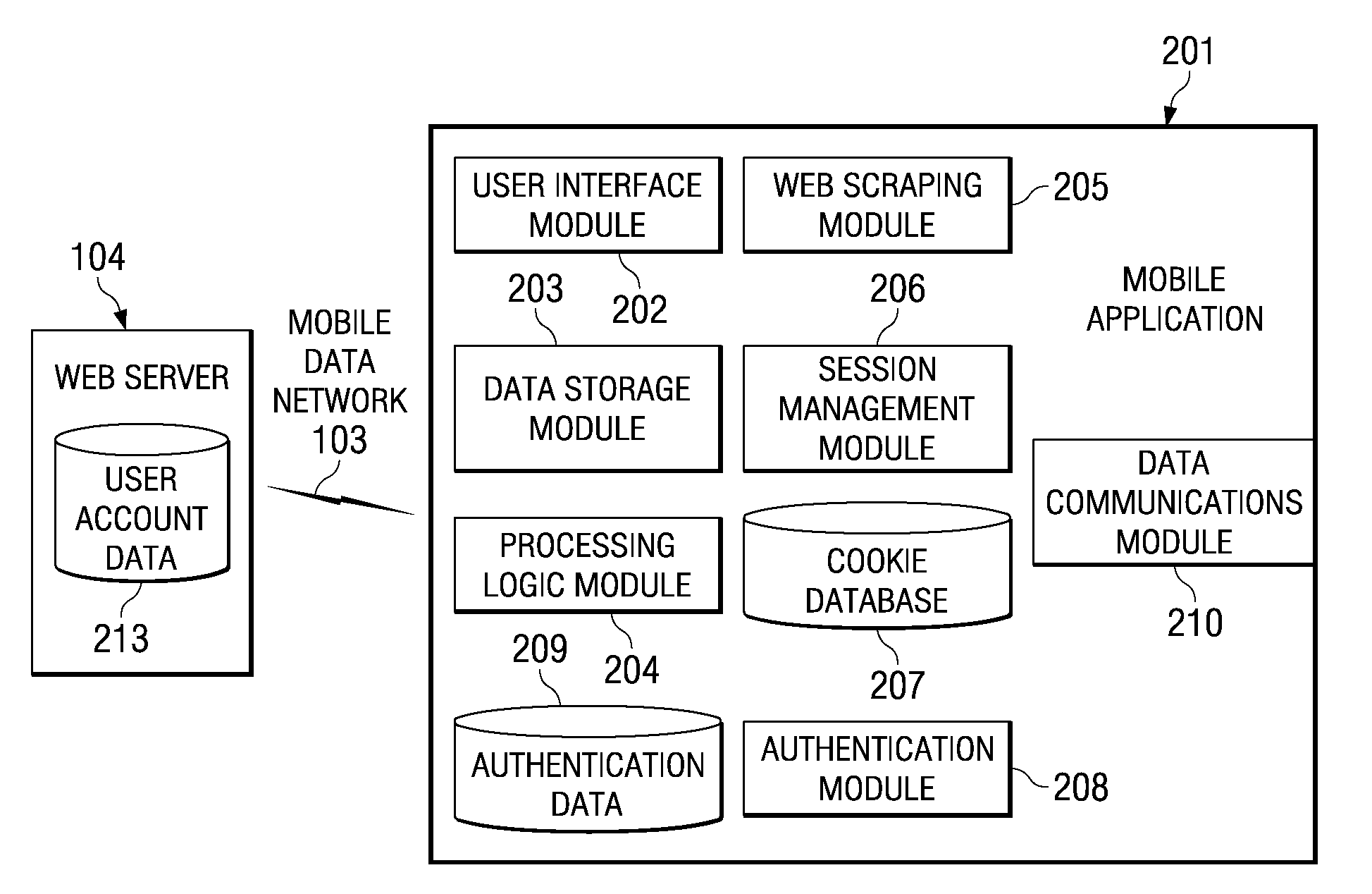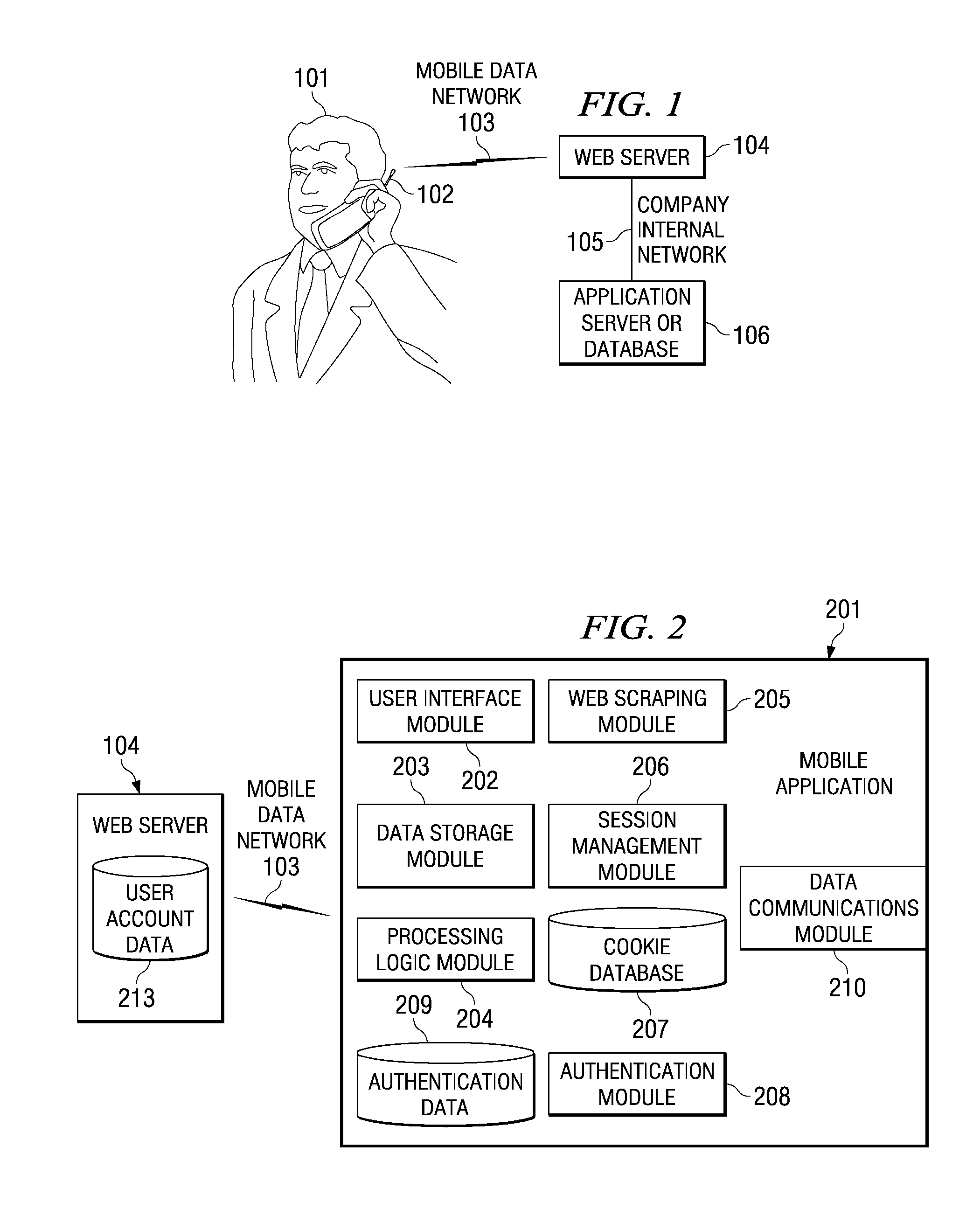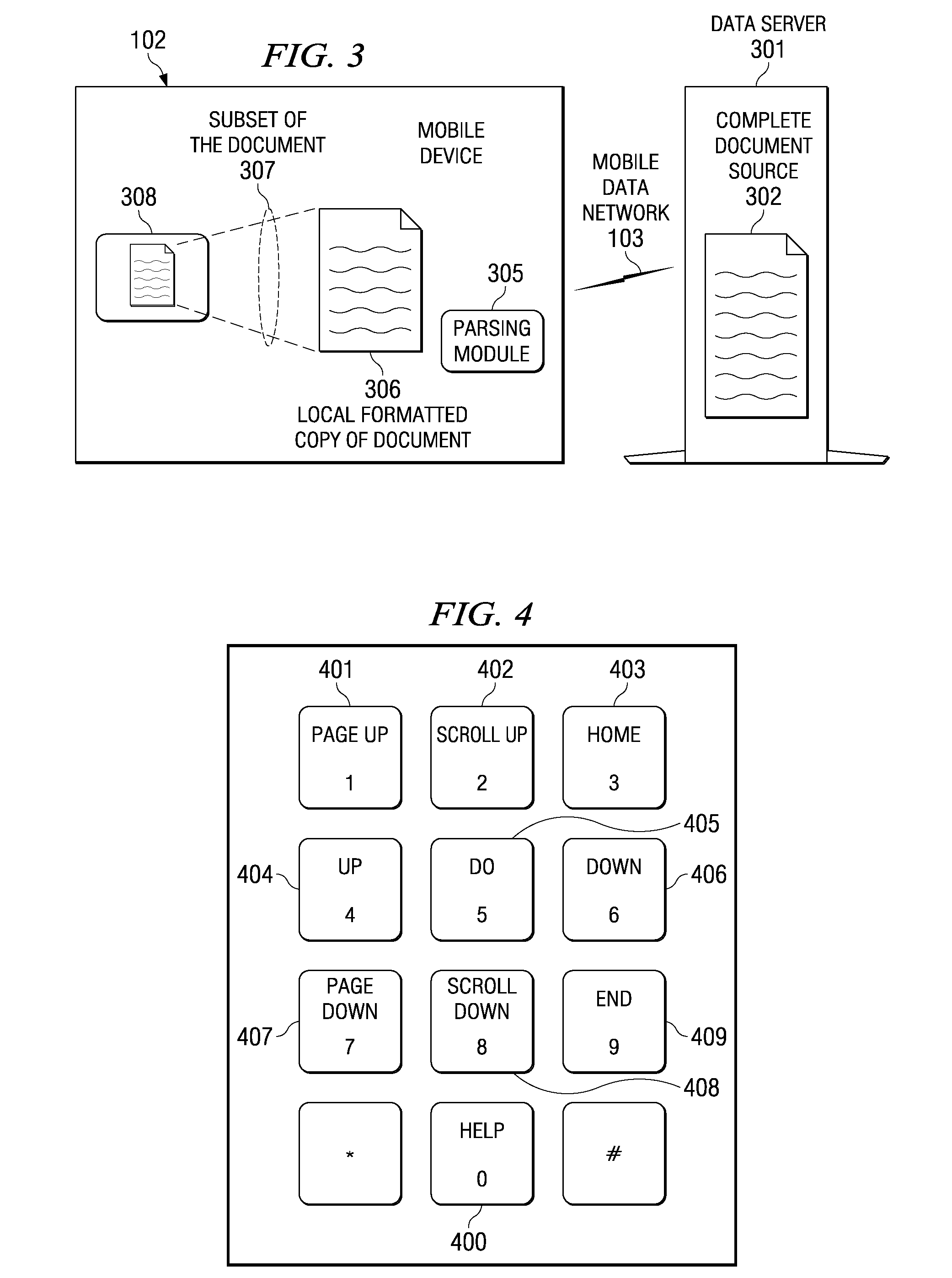System and method for presenting and inputting information on a mobile device
a mobile device and information technology, applied in the field of user interaction with a mobile data device, can solve the problems of limiting the ability of the end user to share copies of the application, accessing resources, and running in a restricted environment, and achieve the effect of providing user control over the navigation within the page and reducing perceived latency
- Summary
- Abstract
- Description
- Claims
- Application Information
AI Technical Summary
Benefits of technology
Problems solved by technology
Method used
Image
Examples
Embodiment Construction
[0061]The disclosed embodiments are directed to user interactions with mobile devices to provide a high quality user experience despite limitations of the device and network. FIG. 1 illustrates a user interacting with a mobile data application that accesses networked information. A User (101) interacts with a Mobile Device (102), which is connected via a Mobile Data Network (103) to a public-Internet accessible Web Server (104). The Web Server communicates via a Company Internal Network (105) to an Application Server or Database (106), which provides the source of the information content. Note that the Web Server and Application Server or Database may be co-located, in which case they may be referred to as the Web Tier and Data Tier.
[0062]Illustrated in FIG. 2 is an implementation of a rich mobile application using standard web protocols to access user data along with the teachings of the present invention. Disclosed embodiments accordingly allow a rich mobile application to be impl...
PUM
 Login to View More
Login to View More Abstract
Description
Claims
Application Information
 Login to View More
Login to View More - R&D
- Intellectual Property
- Life Sciences
- Materials
- Tech Scout
- Unparalleled Data Quality
- Higher Quality Content
- 60% Fewer Hallucinations
Browse by: Latest US Patents, China's latest patents, Technical Efficacy Thesaurus, Application Domain, Technology Topic, Popular Technical Reports.
© 2025 PatSnap. All rights reserved.Legal|Privacy policy|Modern Slavery Act Transparency Statement|Sitemap|About US| Contact US: help@patsnap.com



